Back in 2013, Deak Ferrand explained his work on Jack The Giant Slayer. He then joined the Rodeo FX teams for their Los Angeles office. He works on a large number of shows such as Valerian and the City of a Thousand Planets, Game of Thrones, Blade Runner 2049 and Dune.
Last year Sebastien Francoeur explained the work done by Rodeo FX on The Falcon and The Winter Solider. He then worked on The Witcher.
How did you work to design the creatures?
Deak Ferrand // I started designing the giant Caterpillar first after talking to Sebastien Francoeur and the client. This was done the usual way, working in 3D and enhancing the details in Photoshop. But when the time came to design the Tyrant and the Licker, I asked Sebastien if it would be okay to make real clay maquettes for both creatures. The reason for this was that I’m not that efficient in zBrush, but I can sculpt in clay, and make adjustments very quickly. Sebastien agreed, and it was just a lot of fun to get back to basic, old school sculptures. I then took photos of the maquettes and imported them in Photoshop where I layered all the colors and skin texture to make it look like a finished piece. It worked very well. And this is something that I would love to continue developing in the future.
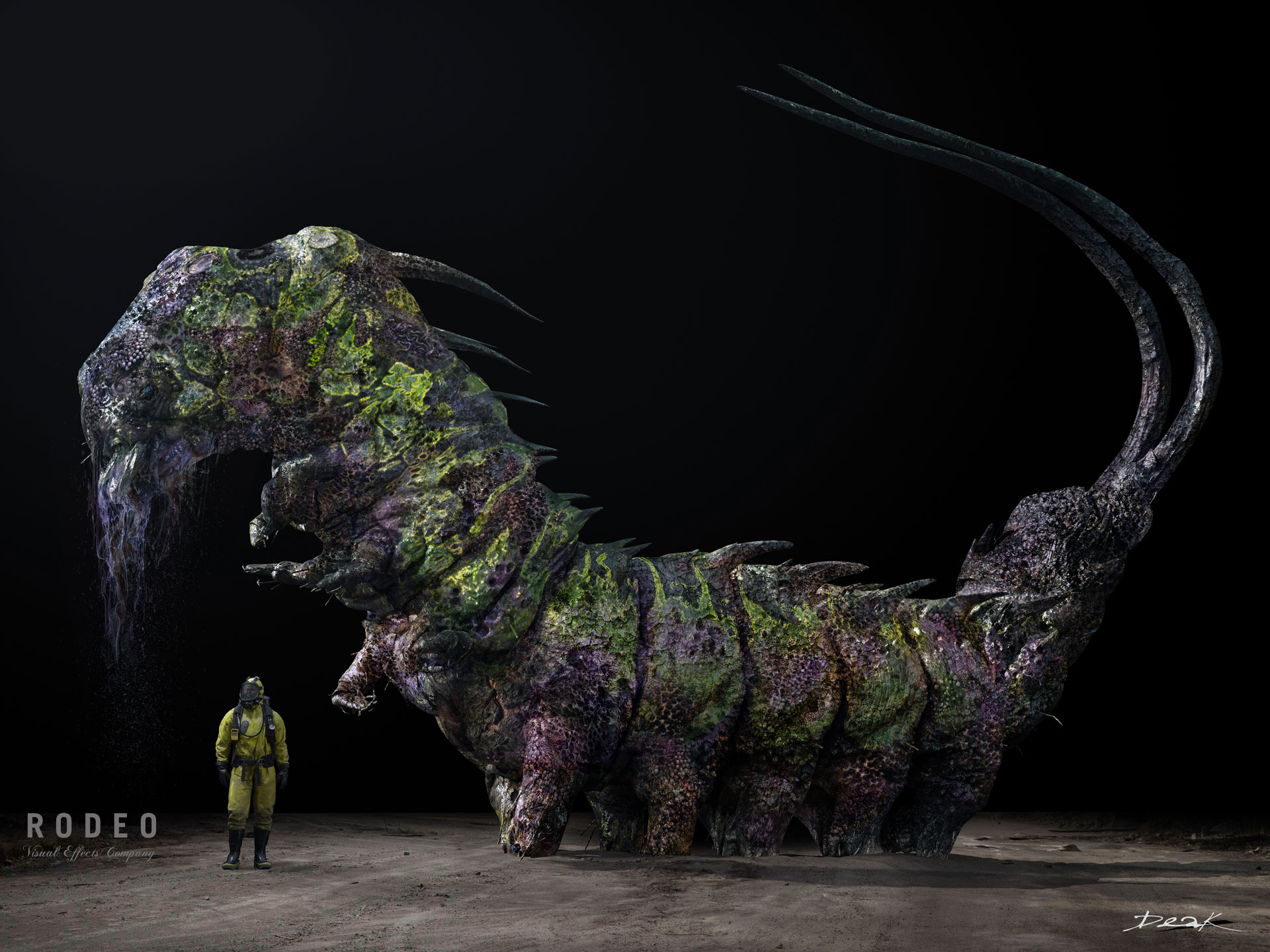
What kind of references and influences did you receive to design the new creatures?
Deak Ferrand // The client had a good idea of what they wanted the Caterpillar to look like, and they provided us with a lot of real life references. It was really an exercise in finding the right mixing ratio between those to come up with the final design. For the Tyrant and the Licker, Sebastien and I looked at all the versions that had been designed for the games and movies, and carefully selected the ones that might be a good jumpstart for the new design. We had to be extremely careful in making the design more real and less game-like.
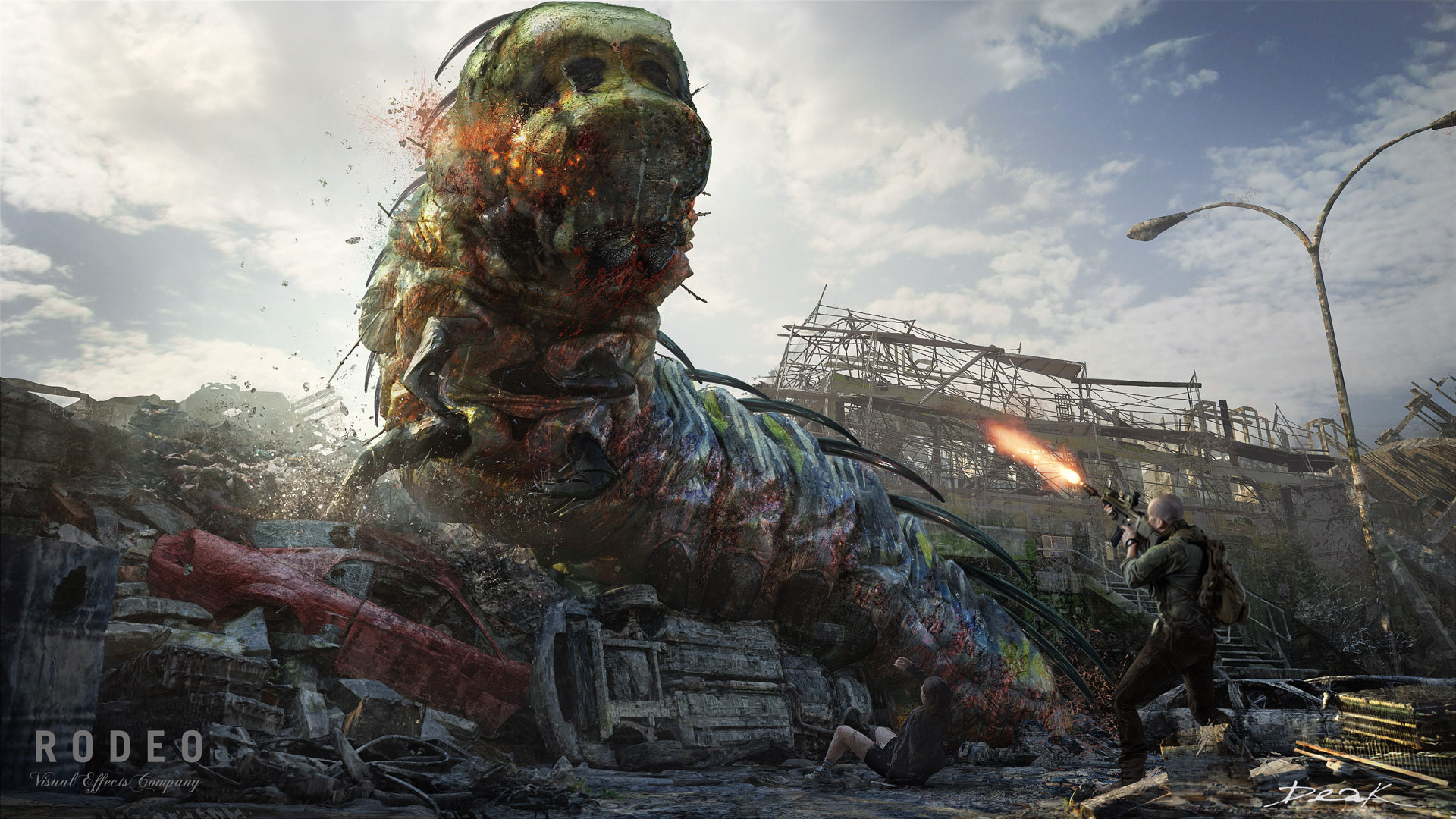
Can you elaborate on the caterpillar?
Deak Ferrand // The Caterpillar is mostly based on a Venus Flytrap caterpillar, but slightly altered to look more menacing and streamlined. It also shows skin decay due to the infection, and we spent some time to find the right balance to make sure that the scale and amount of the infection made sense.
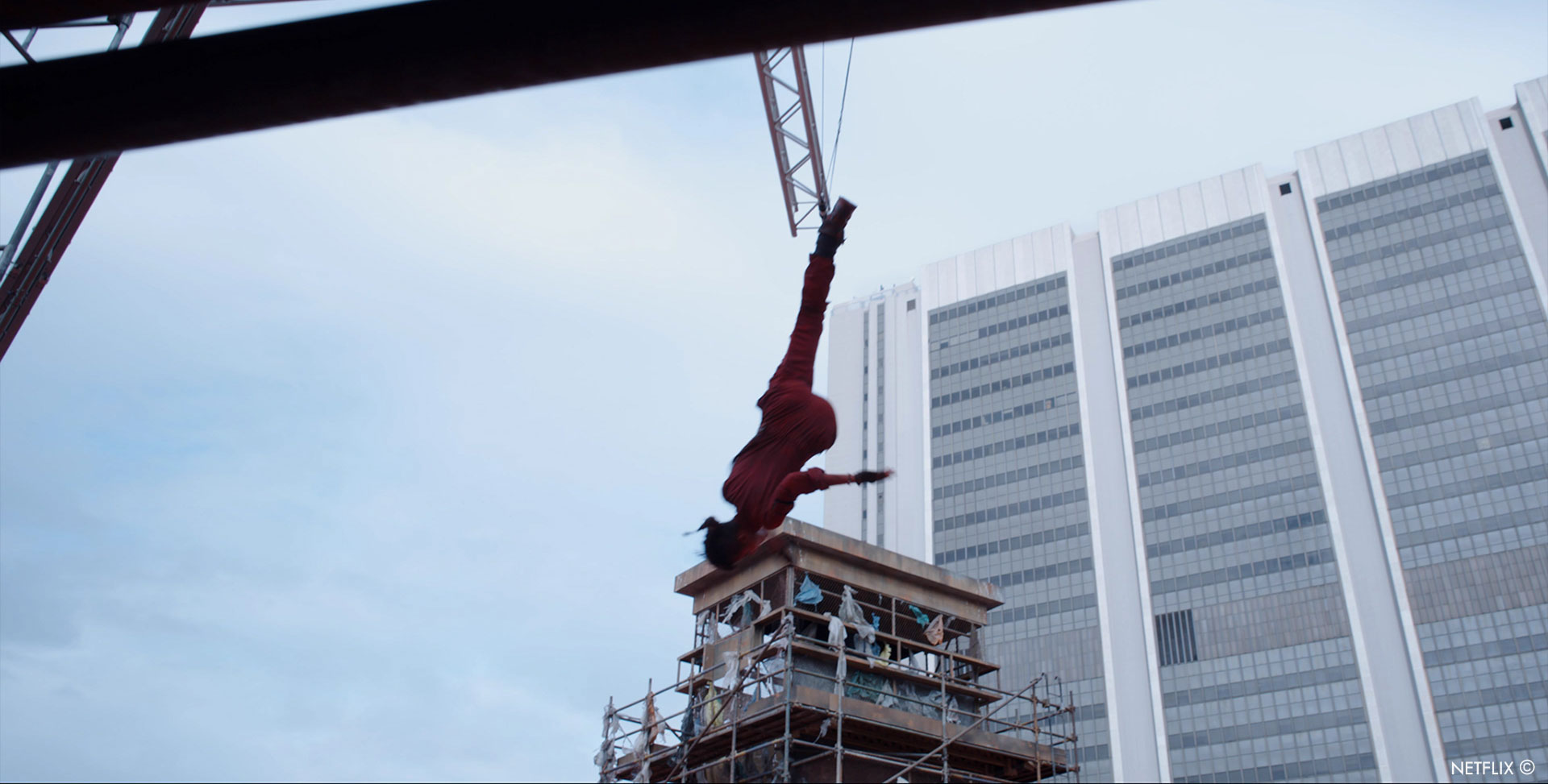
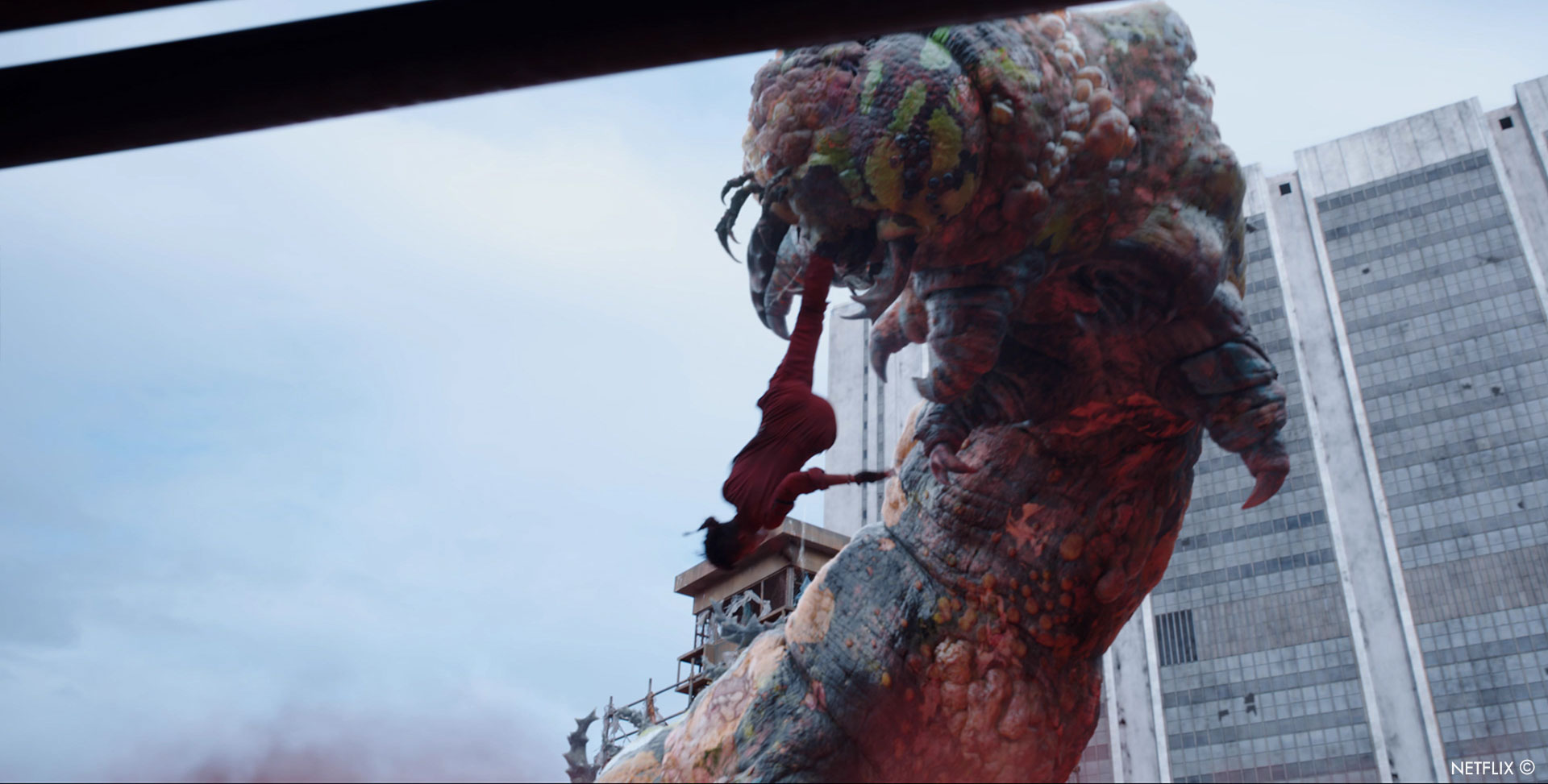
Can you tell us more about the design of The Tyrant?
Deak Ferrand // The Tyrant had to show a certain level of mutation due to the virus infection. But he still has to look like a human. A mix between a zombie and a creature, with its elongated right hand used like a blade. The left arm severed, and started to grow back in a nightmarish way.

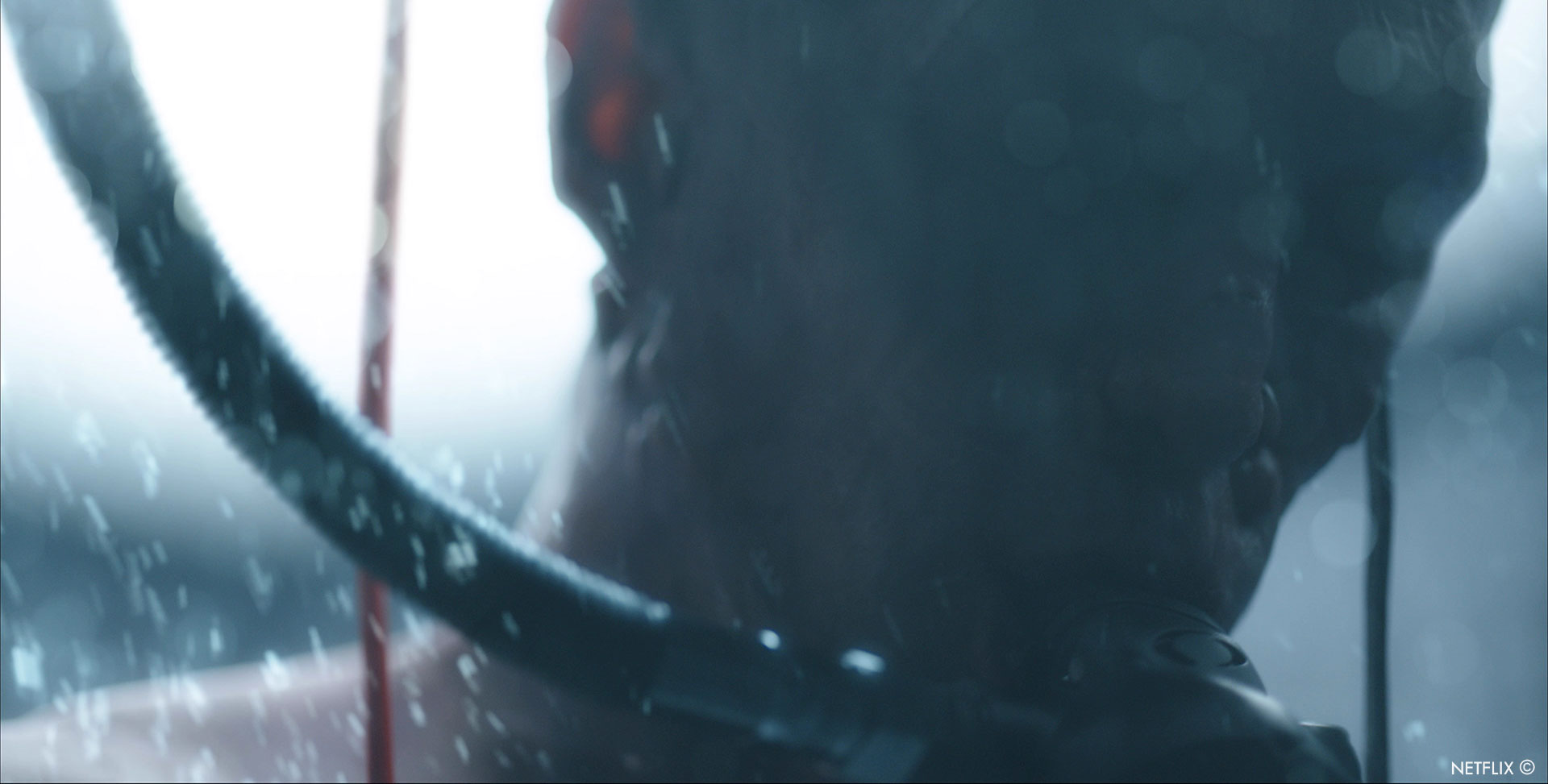
How were the shots filmed of the Tyrant inside the water tank?
Sebastien Francoeur // We had the actor harnessed in an empty tank, hung with multiple cables, and strapped at the waist to give the impression that he was evolving underwater. We added all the volumetric elements, the water, and little bubbles of air to give the ‘depth’ impression of a water tank.
For the tyrant himself, we were mostly playing with his silhouette in this scene and not a real clear view of the monster, so we’ve decided to be smart about it and we digitally recreated the bottom half of his body and did some enhancements for the upper part.
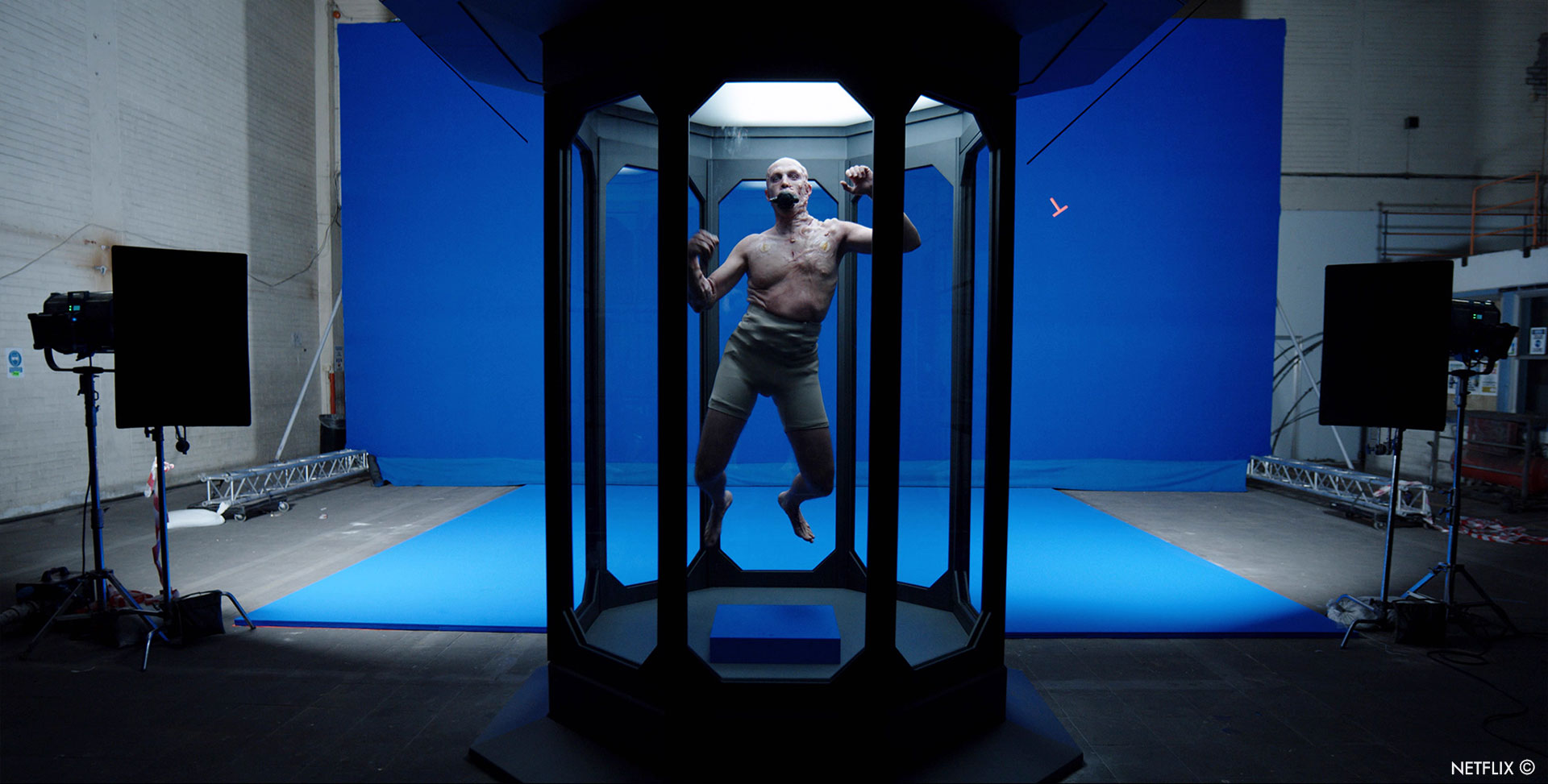
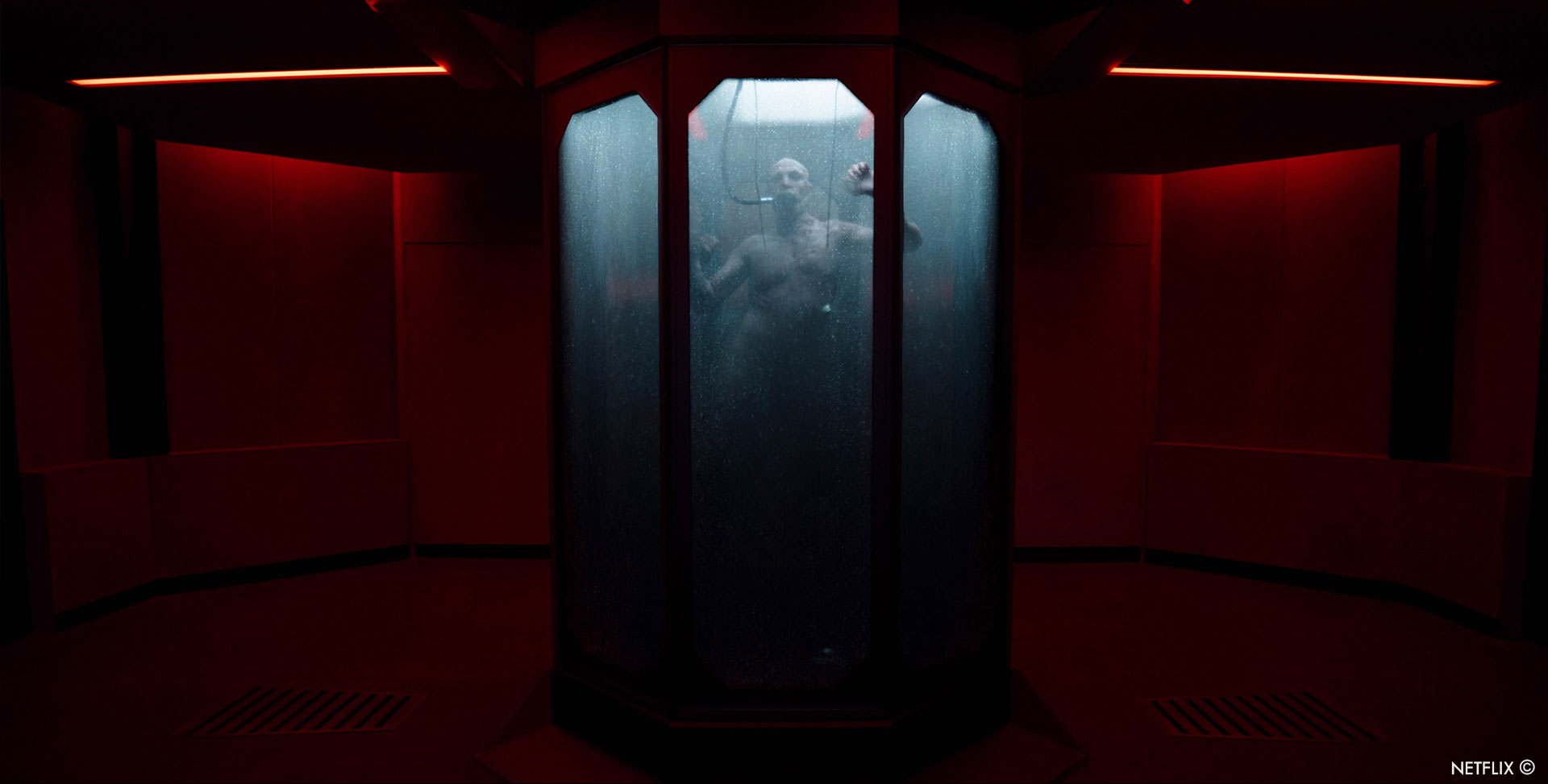
How were the creatures handled on set?
Sebastien Francoeur // The majority of the plates we received were completely empty and we had to reframe some of those to help our characters. The Spider and the Caterpillar for example were fully CG and added onto the plate, so we had to adjust some of the camera angles to keep up with the action.
If you take the death of the Spider, when it gets sliced by the door, this is an example of a fully 3D scene. There was no door and no spider. We added all the details virtually, including the blood spraying all over the place. The dog, however, Cerberus, was on set for some of the sequences. But again, it was mostly empty plates where we added him.
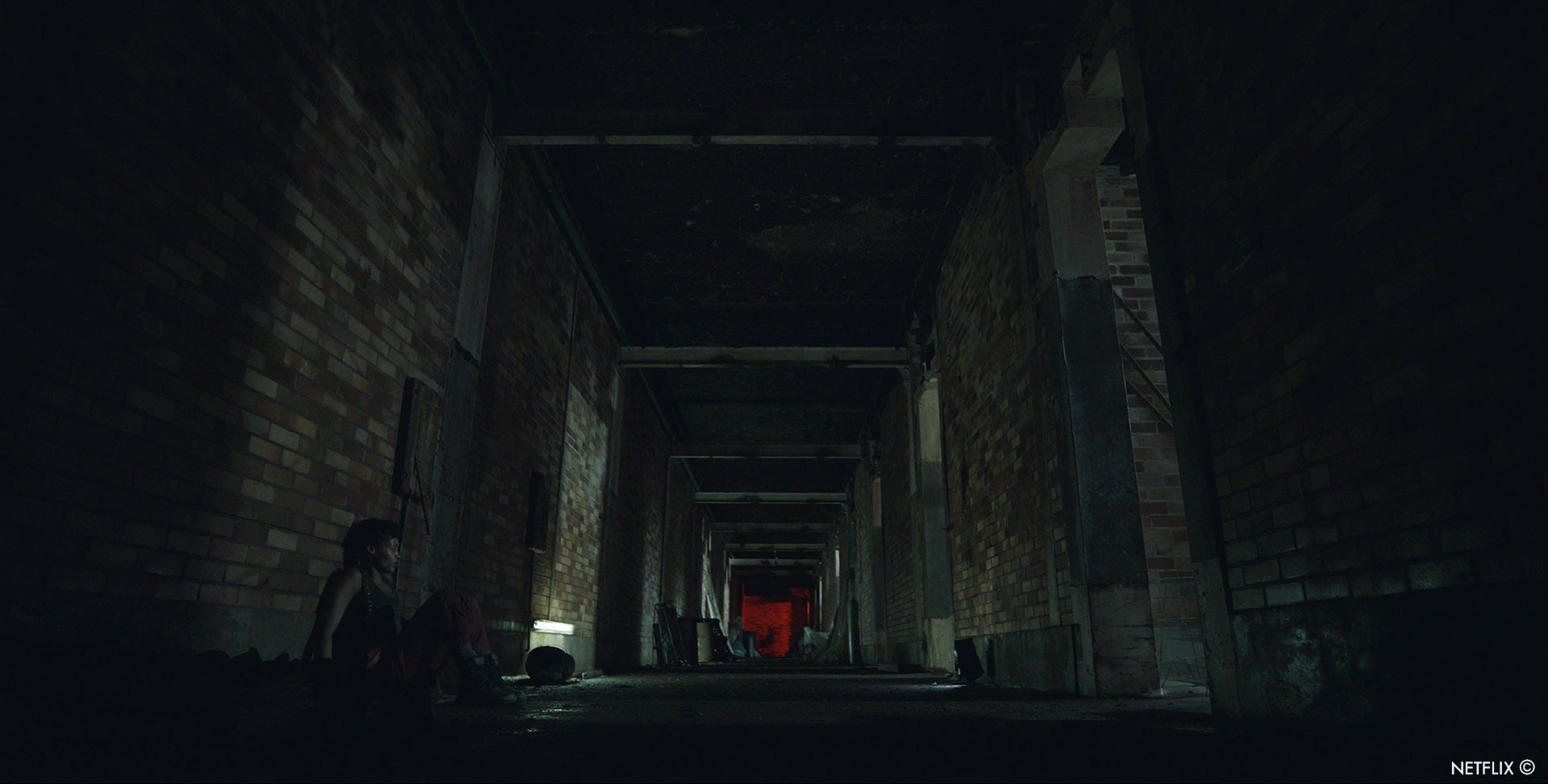
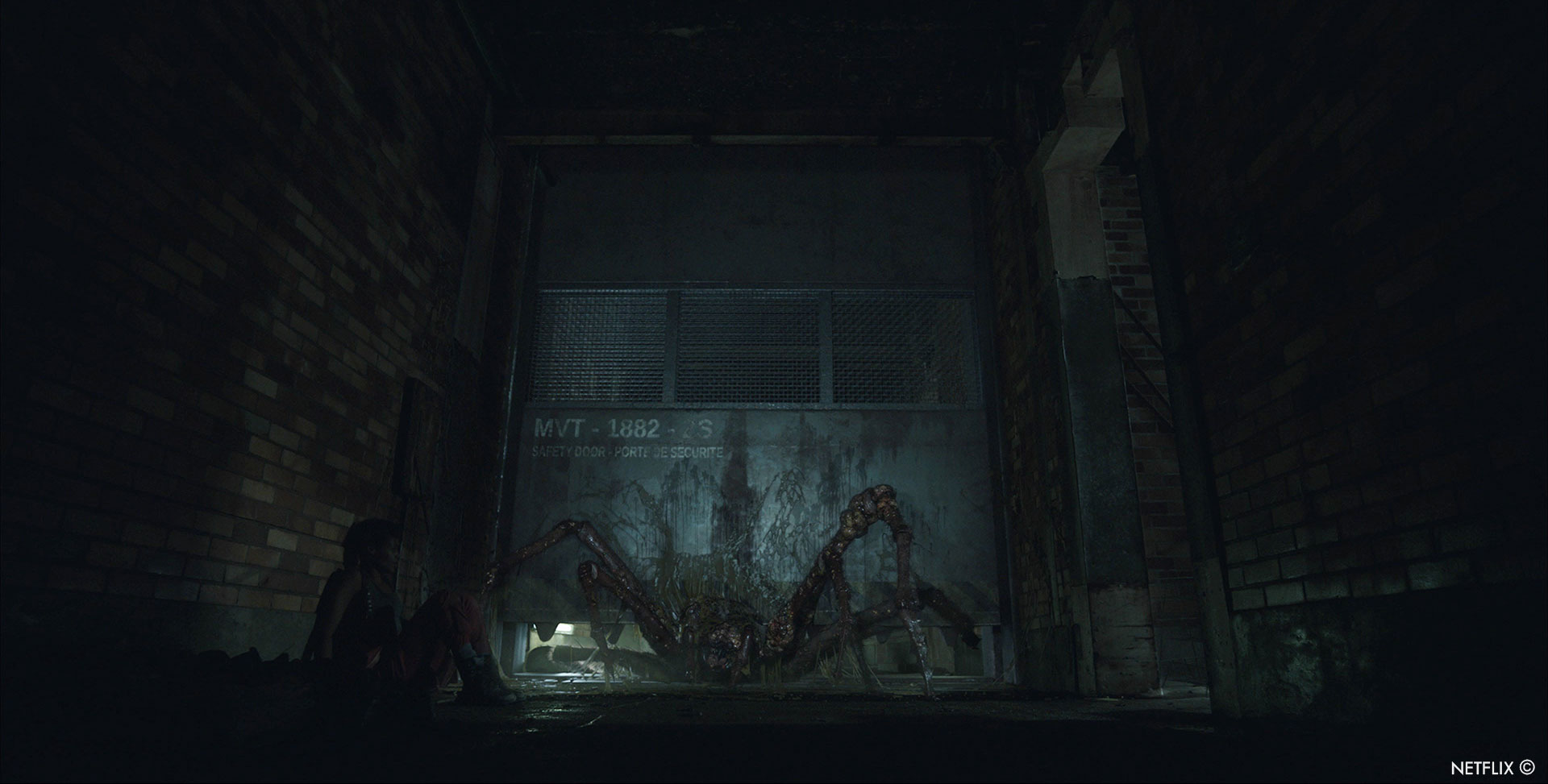
How does the massive size of some creatures, like the caterpillar or the spider, affect your work?
Sebastien Francoeur // It’s still pretty similar to creating a regular-size creature. However, the scale and the details will definitely be different. The fact is, when you play with something human-size, you have references, you kind of know how it looks and how it moves.
When you play with something massive it’s all about the animation, and this time it’s harder to get something to base yourself on. Because to convey this idea of weight, everything happens in a slower motion. As soon as you get too fast, you lose that idea and you can see something is wrong. There’s also tremendous work done by the CFX department to make some parts wobble and jiggle at the right pace. Not too fast but not too slow either, it’s a fine balance.
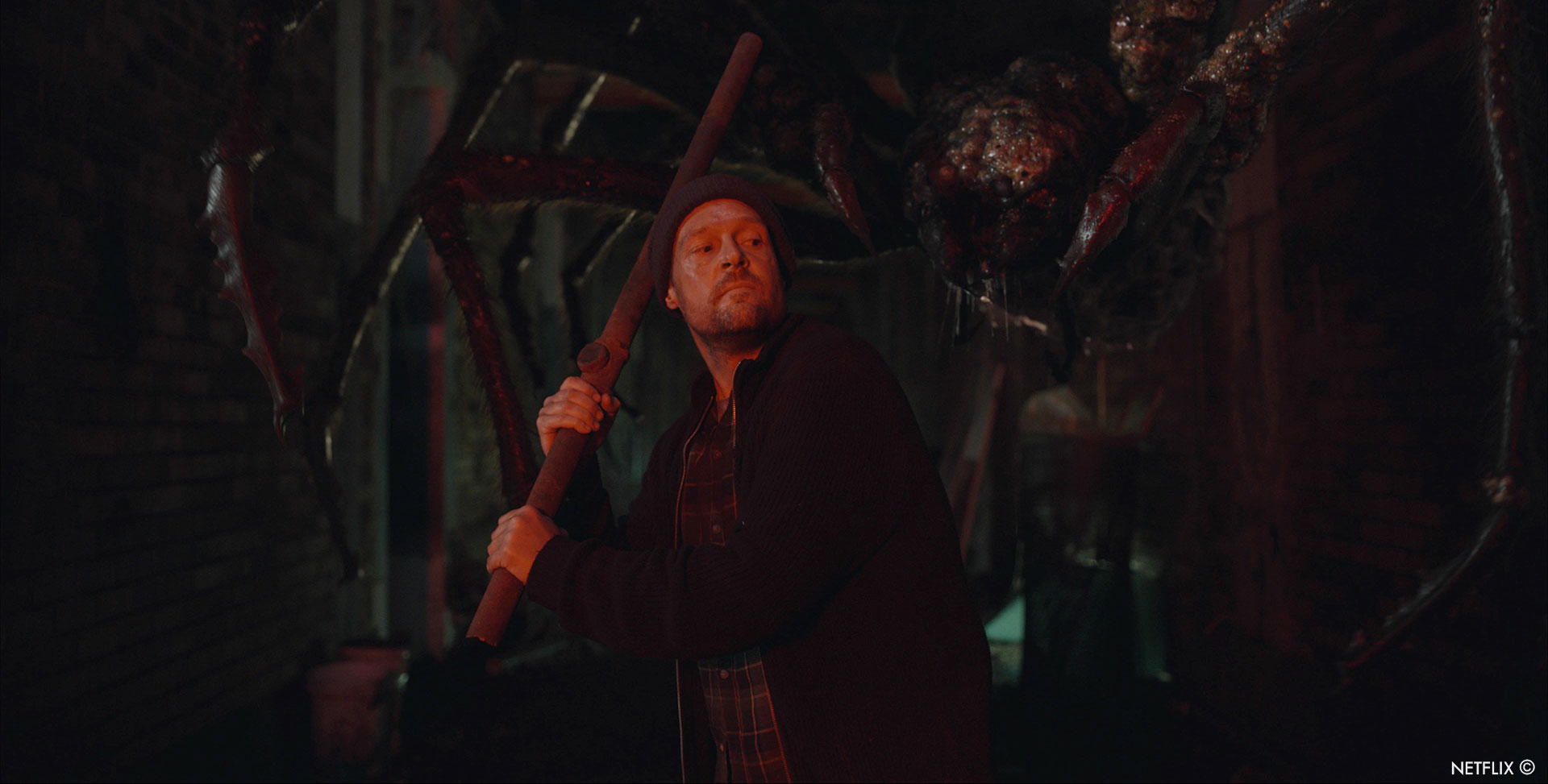
Can you elaborate on the creation and animation of the Cerberus?
Sebastien Francoeur // The client had a very clear vision for Cerberus. He didn’t provide us with concepts so we came up with our own, and had to go through many iterations to match what he wanted on screen. We actually established a universal language for all the other creatures on the show. If you look at the Zeros, they have these gross pustules all over their body and weird slime in their mouth. These are the same elements, the same guidelines we used when designing our creatures. It was also a matter of exposing some body parts, like a rib cage, and having different stages of infections appearing on the body.
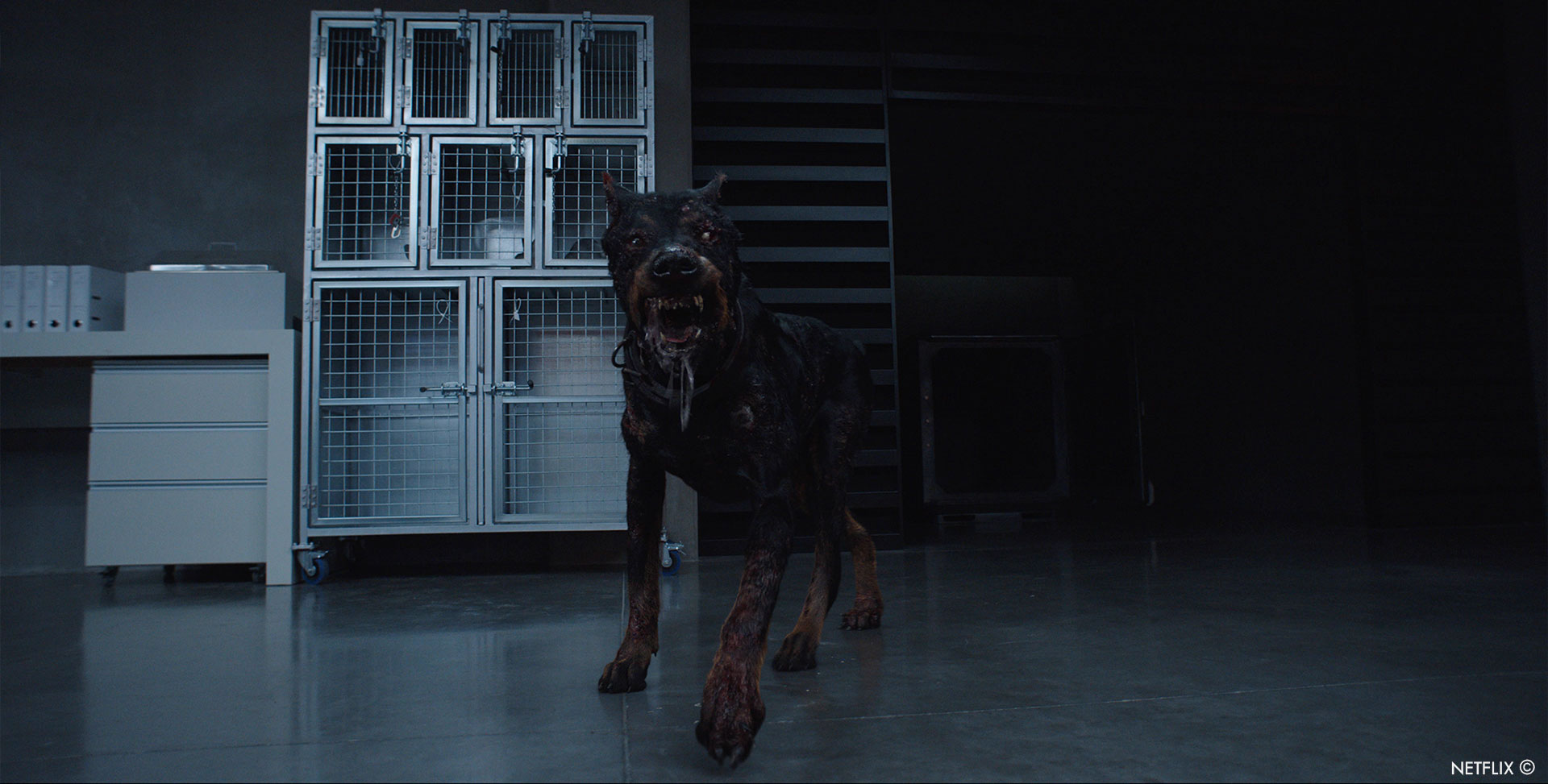
Which creature was the most complicated to design and create?
Sebastien Francoeur // I’d say the giant caterpillar. To make this giant worm realistic and have the animation convey the scale and monstrosity of it. Especially because that sequence happens in full daylight, so we had ‘nowhere to hide’. Everything needed to look perfect. But also because we had to make it vicious. A regular caterpillar is very gentle, almost insignificant, the exact opposite of what we see on screen. Of course, making it as big as a building already helped a lot in making it scary. Then it was the small details that made it even grosser, like the mandibles twitching and groping the actress.
We are very proud of the caterpillar because it was fully developed by Rodeo. From the concept artwork done by Deak Ferrand to the final asset.

What is your favorite shot or sequence?
Sebastien Francoeur // When the girl is under the wagon and the caterpillar chases her, slowly crawling towards her and you see this huge mass jiggling. I also really liked the shot when the spider slowly crawls behind the characters, coming down before slicing him.

What is your best memory of this show?
Sebastien Francoeur // It was the first time we worked with Kevin Lingenfelser and it was a great collaboration right from the start. We are really excited to work together again.
A big thanks for your time.
// Resident Evil – The Most WTF Moments – Netflix
WANT TO KNOW MORE?
Rodeo FX: Dedicated page about Resident Evil on Rodeo FX website.
Kevin Lingenfelser: Here is my interview of Kevin Lingenfelser, Production VFX Supervisor about Resident Evil.
Netflix: You can watch Resident Evil on Netflix.
© Vincent Frei – The Art of VFX – 2022






